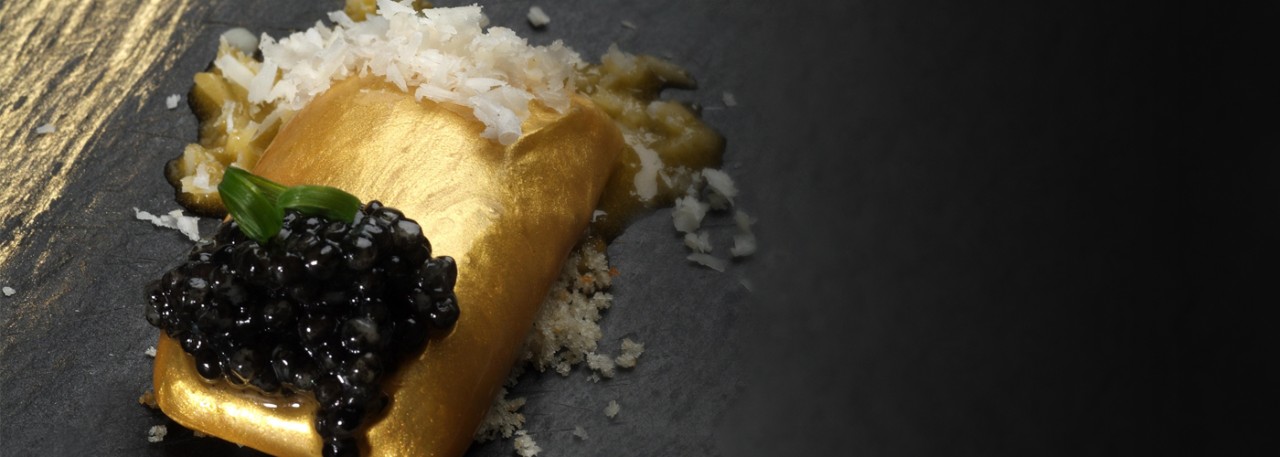Cava Kripta by Agustí Torelló. The best partner for caviar is almost invariably cava, and this Brut Nature gives it a sweet touch that combines very well with the smoothness of the oil.
.png.transform/rendition-xs/image_image%20(1).png)
For the frozen gold semolina
Mix the Arbequina extra virgin olive oil and the gold dust. Transfer to a siphon, close and fit 2 gas cartridges. Spray into the liquid nitrogen and leave to stand for a couple of minutes. Dip a spoon into nitrogen to make it cold, then use to transfer the gold balls to a fine chinois to sieve. Add a little salt and stir.
For the olive oil mousse
Transfer the frozen gold semolina to a Pacojet beaker. Process until creamy and foamy like a mousse.
For the ingot molds
Transfer the olive oil mousse to the rubber molds. Smooth out with the spatula and fill completely. Place in the flash freezer and bring the temperature to -30ºC / -22ºF. Turn out the molds 1 by 1. Then return the ingots to the molds and leave inside the fast freezer to keep them cold.
For the gold jelly
Heat the flavored water and when it boils, add the gelatin and stir.
For the liquid gold ingot
Place the nitrogen and gold jelly next to each other. Prick the extra virgin olive oil ingots with 2 pins and insert in nitrogen for 3 seconds. Remove and leave to stand for 2 seconds. With the jelly reaches 69ºC / 156ºF, dunk the ingot in the jelly to coat and remove. This will result in a small, extra virgin olive oil gold ingot. Chill at about 6ºC / 43ºF.
For the Hojiblanca olive breadcrumbs
Sauté the garlic with the thyme and olive oil. Add the white breadcrumbs. Stir then turn out onto a griddle. When lightly toasted, add the powdered olives and a little salt.

Serve 2 tablespoons of Hojiblanca olive breadcrumbs on a slate. Carefully remove the gold ingot from the refrigerator and place on top. Next to it place a little Riofrío caviar and sprinkle over a little grated Macadamia nut.
Chef's Remark:
"Never before could we have imagined a dish in which olive oil was the main feature. It still comes as a surprise but, in the mouth, the sensation is light, silky and smooth and not at all heavy. Furthermore, it’s a different way of enjoying all the aromas and nuances to be found in both extra virgin olive oil and the olives it came from."
Preparation by: Dani García
Cava Kripta by Agustí Torelló. The best partner for caviar is almost invariably cava, and this Brut Nature gives it a sweet touch that combines very well with the smoothness of the oil.